
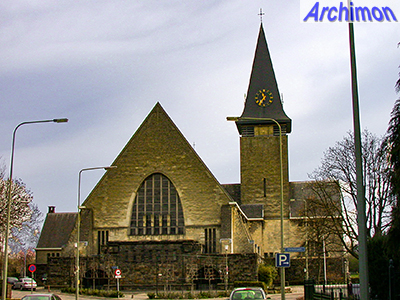 The
partnership of A.J.N. Boosten and J. Ritzen only resulted in
the construction of two churches as well as of several profane
designs. Both these churches were built in the same period and
were largely built of natural stone, marl especially. But there
the similarities between the 'twins' end. While the H.
Hartkerk in Maastricht was a big centralized church covered
by a dome, this H. Johannes de Doper in Eygelshoven seems more
traditional, a cruciform church with a tower. Yet this design
also met with criticism. In a time when neo-Gothicism and neo-Romanesque
were still the standard styles for churches in the province of
Limburg, any attempt at building a church in a different style
was like asking for trouble. This criticism however was still
largely unorganized, and the diocese had only just installed
a committee that was to make sure that all new churches were
acceptable for the catholic standards. Also, Eygelshoven was
badly in need of a new church, with the old church, which is
still preserved elsewhere in the village, being much too small.
Giving the design the benefit of the doubt was the most practical
thing to do, but Boosten didn't get to build another complete
church until 1929 due to the controversy over the two churches.
Limburg wasn't ready yet for his unconventional designs. At the
same time the church in Margraten was extended, and although
that work is often attributed to Boosten alone it is very similar
in style to this one. This makes it unclear what each of the
two architects contributed to this church. It shows similarities
with Boosten's later work in some parts, like the choir and the
tower, while it doesn't in others. A typical feature is the use
of two different types of natural stone. A darker type, Nivelsteinerstone,
has been used to form a base on which the otherwise marl church
was built. Strangely, at the back of the church this role seems
to have been taken over by brick, and here this base extends
to become an ambulatory.
The
partnership of A.J.N. Boosten and J. Ritzen only resulted in
the construction of two churches as well as of several profane
designs. Both these churches were built in the same period and
were largely built of natural stone, marl especially. But there
the similarities between the 'twins' end. While the H.
Hartkerk in Maastricht was a big centralized church covered
by a dome, this H. Johannes de Doper in Eygelshoven seems more
traditional, a cruciform church with a tower. Yet this design
also met with criticism. In a time when neo-Gothicism and neo-Romanesque
were still the standard styles for churches in the province of
Limburg, any attempt at building a church in a different style
was like asking for trouble. This criticism however was still
largely unorganized, and the diocese had only just installed
a committee that was to make sure that all new churches were
acceptable for the catholic standards. Also, Eygelshoven was
badly in need of a new church, with the old church, which is
still preserved elsewhere in the village, being much too small.
Giving the design the benefit of the doubt was the most practical
thing to do, but Boosten didn't get to build another complete
church until 1929 due to the controversy over the two churches.
Limburg wasn't ready yet for his unconventional designs. At the
same time the church in Margraten was extended, and although
that work is often attributed to Boosten alone it is very similar
in style to this one. This makes it unclear what each of the
two architects contributed to this church. It shows similarities
with Boosten's later work in some parts, like the choir and the
tower, while it doesn't in others. A typical feature is the use
of two different types of natural stone. A darker type, Nivelsteinerstone,
has been used to form a base on which the otherwise marl church
was built. Strangely, at the back of the church this role seems
to have been taken over by brick, and here this base extends
to become an ambulatory.
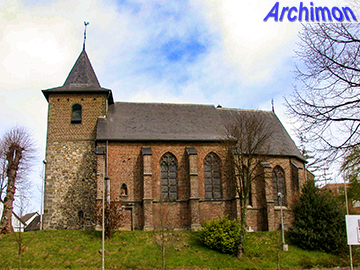
The predecessor, a small Gothic church. The lower part of the tower probably dates from the 11th century, the upper part was added shortly after 1513. The choir and the nave are from the early-16th century as well. When the church closed in 1921 it was threathened with demolition. An increasing interest for regional history and rural architecture saved the building, one of the first successes in this field in this province. In 1939-1940 the church was restored and it has been a chapel since.
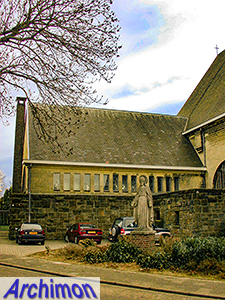
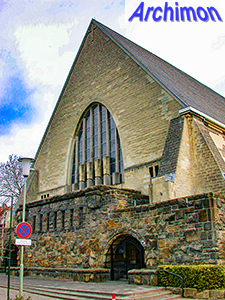
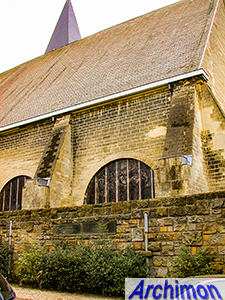
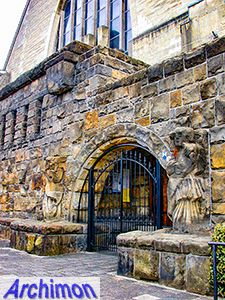
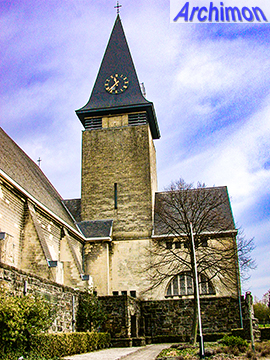
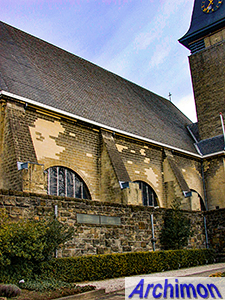
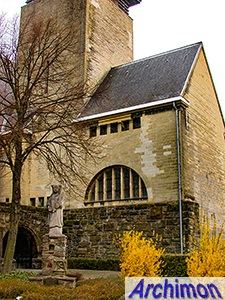
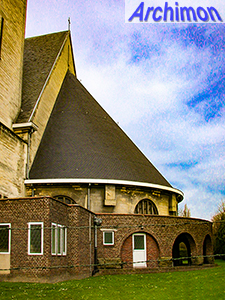
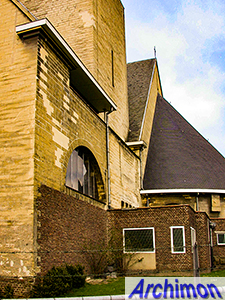
Back to the Province of Limburg Places & buildings
Back to A.J.N. Boosten